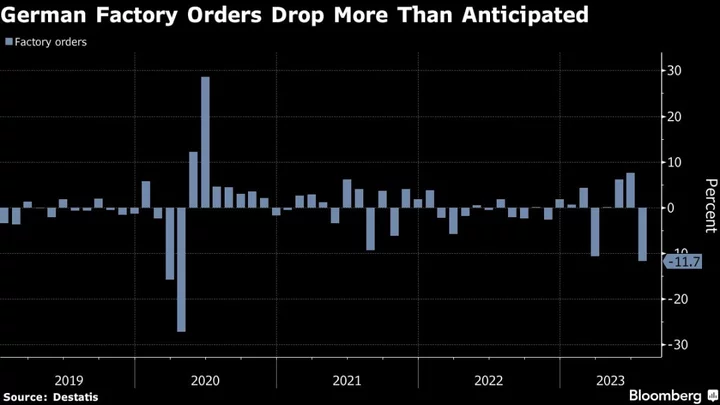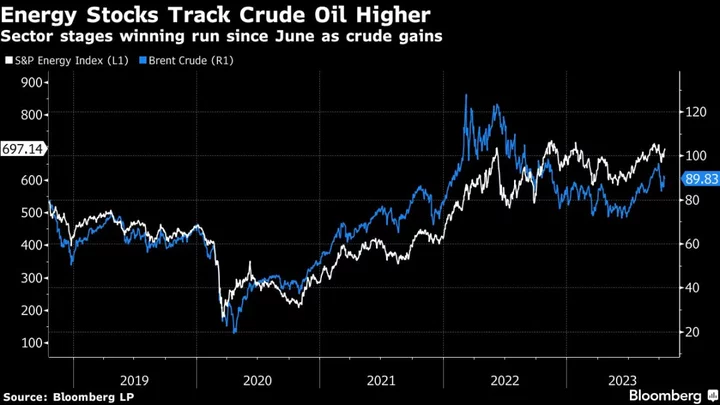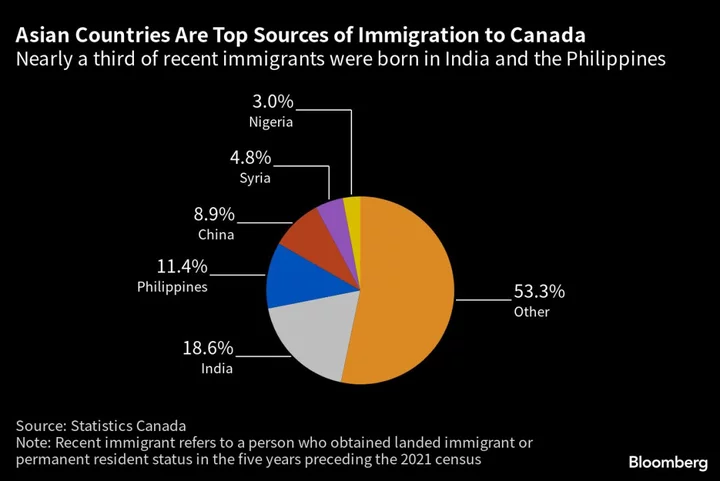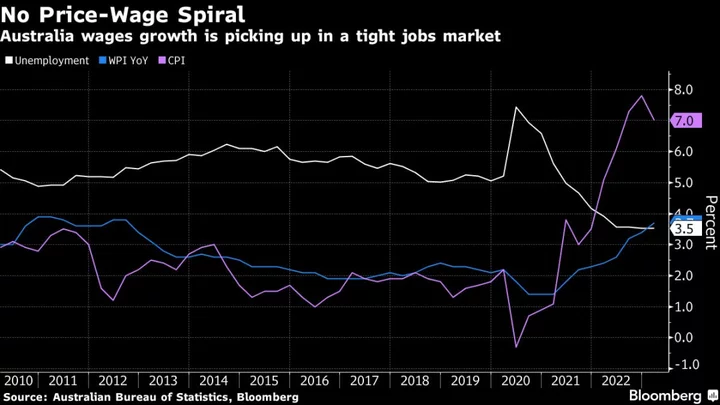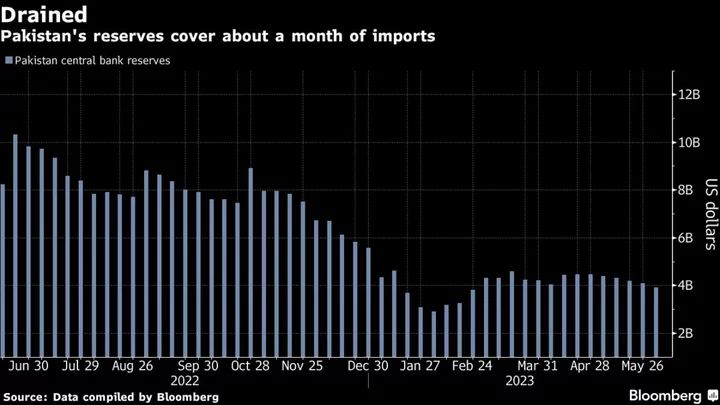German factory orders plummeted in July, a sign that the woes of Europe’s biggest economy continued into the third quarter.
Demand decreased by 11.7% from June, far worse than the 4.3% drop expected by economists in a Bloomberg survey. That decline was due to major orders, without which the gauge would have increased by 0.3%.
The drop in what is a volatile series did follow three months of gains.
After enduring a winter recession brought on by Russia’s war in Ukraine, German output failed to expand in the second quarter and will probably also stall in the third.
With the final three months of 2023 only likely to bring growth of 0.1%, some have revived the “sick man of Europe” tag assigned to Germany in the aftermath of its reunification in 1990.
Industry has been weighing most, due to poor demand in China, the world’s No. 2 economy, which is itself losing momentum.
German manufacturing data due for release Thursday may also show ongoing weakness, with the median economist estimate predicting a third consecutive monthly contraction.
Asked about the “sick man” moniker, Bundesbank President Joachim Nagel acknowledged that the current situation isn’t great.
“It’s true that we slipped into a technical recession in the winter half-year and that economic development since then hasn’t been satisfactory,” he told Handelsblatt newspaper in an interview. “But: We expect the picture to brighten again.”
He pointed to the strength of the labor market, saying that it’s in a much better condition than in the 1990s. That makes comparisons with that period flawed.
“Germany isn’t the sick man of Europe,” he said. “I think that’s a misdiagnosis” and “we should be more self-confident.”
--With assistance from Joel Rinneby and Kristian Siedenburg.

